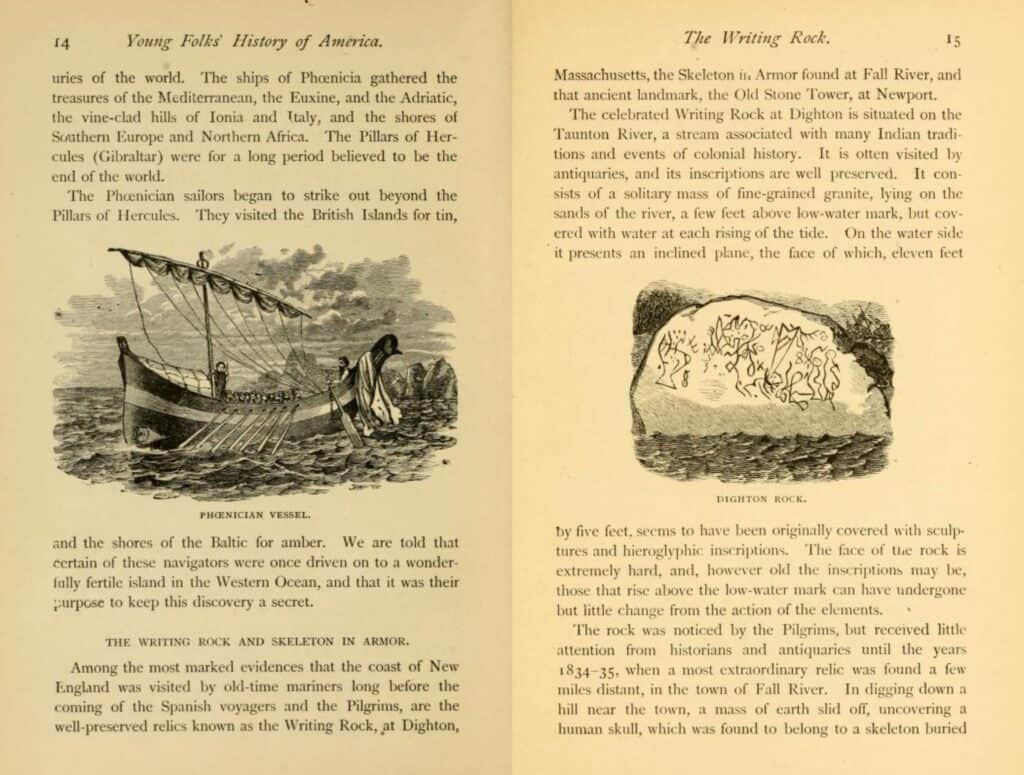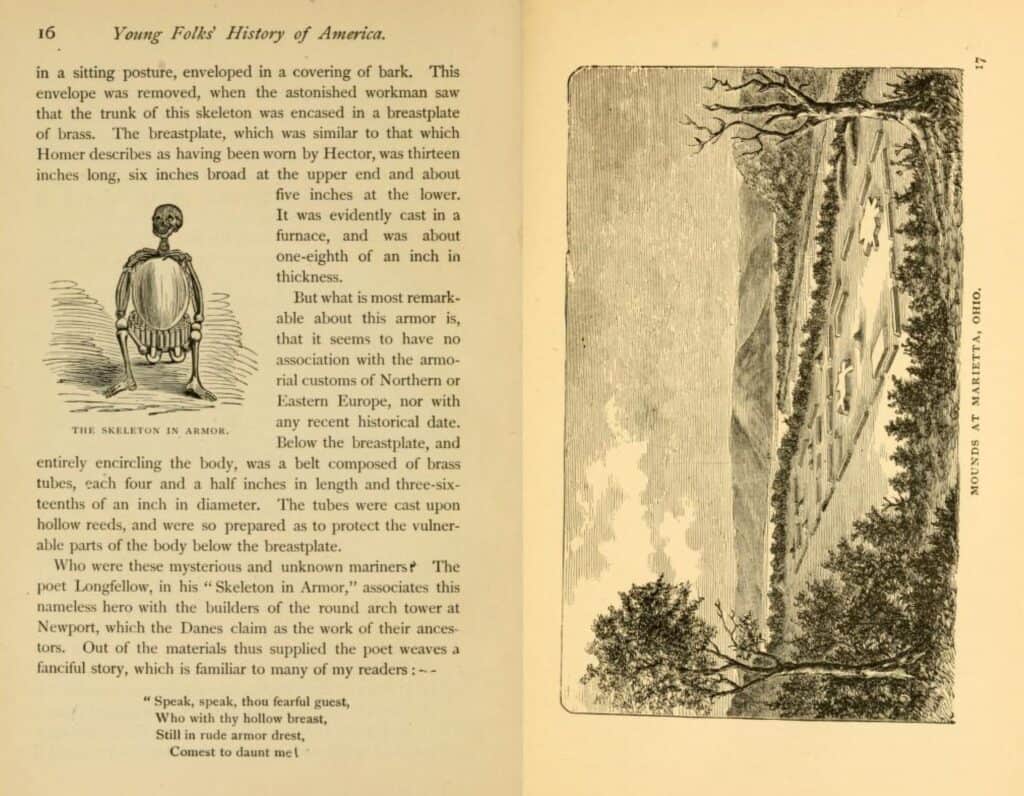



CHAPTER I.
THE MYSTERIOUS RACES.
It is highly probable that the American continent was known to the ancients, though in a somewhat imperfect way. Plato, four hundred years before our Saviour’s time, gives a particular account of the great island of Atlantis, “an island that was larger than Libya (Africa) and Asia.” Strabo and Pliny both mention a like mysterious island. We are told that this great territory was inhabited by a powerful people, who became so wicked that they were drowned by the judgment of heaven, and that the island itself, that was larger than Africa and Asia, sunk in the sea. For many years it was deemed dangerous for navigators to sail westward on account of the ruins of this mysterious island which, it was believed, strewed the waters and impeded the way.
Atlantis may have been a fabulous land, but the Phoenicians or Canaanites had a knowledge of a country beyond the sea. Phoenicia, like England, once ruled the waves. Take the map of Asia and glance over the narrow strip of territory lying between the hills of Palestine and the sea. Here are the sites of Tyre and Sidon, the ancient London and Liverpool of the Mediterranean, into whose gay bazaars, glittering temples, and spacious palaces once flowed the luxuries of the world. The ships of Phoenicia gathered the treasures of the Mediterranean, the Euxine, and the Adriatic, the vine-clad hills of Ionia and Italy, and the shores of Southern Europe and Northern Africa. The Pillars of Hercules (Gibraltar) were for a long period believed to be the end of the world.
The Phoenician sailors began to strike out beyond the Pillars of Hercules. They visited the British Islands for tin, and the shores of the Baltic for amber. We are told that certain of these navigators were once driven on to a wonderfully fertile island in the Western Ocean, and that it was their purpose to keep this discovery a secret.
Massachusetts, the Skeleton in Armor found at Fall River, and that ancient landmark, the Old Stone Tower, at Newport.
The celebrated Writing Rock at Dighton is situated on the Taunton River, a stream associated with many Indian traditions and events of colonial history. It is often visited by antiquaries, and its inscriptions are well preserved. It consists of a solitary mass of fine-grained granite, lying on the sands of the river, a few feet above low-water mark, but covered with water at each rising of the tide. On the water side it presents an inclined plane, the face of which, eleven feet by five feet, seems to have been originally covered with sculptures and hieroglyphic inscriptions. The face of the rock is extremely hard, and, however old the inscriptions may be, those that rise above the low-water mark can have undergone but little change from the action of the elements.
The rock was noticed by the Pilgrims, but received little attention from historians and antiquaries until the years 1834-35, when a most extraordinary relic was found a few miles distant, in the town of Fall River. In digging down a hill near the town, a mass of earth slid off, uncovering a human skull, which was found to belong to a skeleton buried in a sitting posture, enveloped in a covering of bark. This envelope was removed, when the astonished workman saw that the trunk of this skeleton was encased in a breastplate of brass. The breastplate, which was similar to that which Homer describes as having been worn by Hector, was thirteen inches long, six inches broad at the upper end and about five inches at the lower. It was evidently cast in a furnace, and was about one-eighth of an inch in thickness.
But what is most remarkable about this armor is, that it seems to have no association with the armorial customs of Northern or Eastern Europe, nor with any recent historical date. Below the breastplate, and entirely encircling the body, was a belt composed of brass tubes, each four and a half inches in length and three-sixteenths of an inch in diameter. The tubes were cast upon hollow reeds, and were so prepared as to protect the vulnerable parts of the body below the breastplate.
Who were these mysterious and unknown mariners? The poet Longfellow, in his “Skeleton in Armor,” associates this nameless hero with the builders of the round arch tower at Newport, which the Danes claim as the work of their ancestors. Out of the materials thus supplied the poet weaves a fanciful story, which is familiar to many of my readers:
“Speak, speak, thou fearful guest,
Who with thy hollow breast,
Still in rude armor drest,
Comest to daunt me!”
